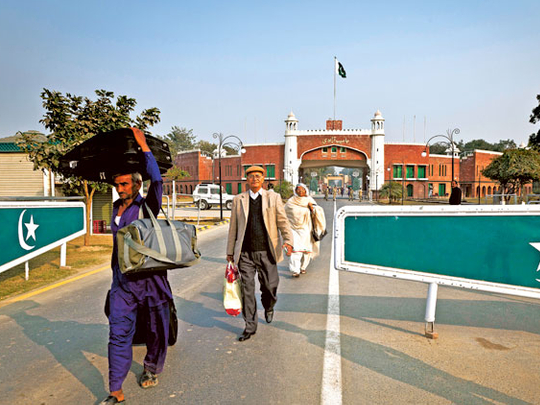
Halfway into the current fiscal, Pakistan’s economy is showing signs of modest improvement. Initial data showed commodities producing sector, especially agriculture, exceeding expectations. Services also seem to gain from robust retail trade activities, transportation and the increased profitability of the banking sector.
Pakistan’s economy is the 47th largest in the world in nominal terms and 27th largest in terms of purchasing power parity. The country is seeking to build on this with Dr Abdul Hafeez Sheikh, Pakistan’s Finance Minister working to boost the capacity utilisation of Pakistan Steel Mills from the present levels of 20 per cent to 80 per cent and there’s also talk of reforms in power generation sector.
Peace negotiations
Pakistan closed the financial year with $15 billion (about Dh55 billion) in foreign exchange reserves, despite paying $1.2 billion to the International Monetary Fund (IMF). The country’s progression to a brighter economic future could benefit from a recent dialogue with India regarding a Pakistani cricket tour. Pakistan will be visiting India for the first time in five years. Both governments have been holding regular meetings in a bid to improve ties and reach a peace agreement.
Speaking this July, Commerce Secretary Munir Qureshi stated that under the Pak-India trade liberalisation programme, the removal of non-tariff-barriers is crucial to Pakistan. Furthermore, talks on importation of power from India were held in Lahore in July; while talks on the import of petroleum from Pakistan will be held in Delhi. The country will also benefit from India’s recent decision this month to allow Foreign Direct Investment by Pakistani citizens and companies.
Usman Khosa, a former IMF employee now with Bank of America Merrill Lynch, says, “Pakistan has more to gain from opening up trade with India than the other way around; policy makers should let animal spirits take hold rather than pummelling trade through policy or nepotism.”
US President Barack Obama has expressed his appreciation, saying, “President Asif Ali Zardari’s visit to India was encouraging. Increased trade and people-to-people contacts between Indians and Pakistanis can lead to greater understanding on both sides.”
Pakistan has a semi-industrialised economy that includes textiles, chemicals, food processing and agriculture. The economy has suffered from political disputes, a growing population, an ongoing confrontation with India; and now an involvement in the War on Terror. During the 1960s, Pakistan was seen as a model of economic development around the world and many countries sought to emulate its economic planning strategy — like South Korea, which employed Karachi’s Five-Year Plan while Seoul’s World Financial Centre is modelled after Karachi’s financial hub.
A large increase in the country’s public debt led to slower growth in the 1970s, and then in the 1990s. The economy recovered during the 1980s thanks to a policy of deregulation, as well as an increased inflow of foreign aid and remittances from expatriate workers.
Remittances from expats
Remittances, in fact, played a key role to stabilise the economy. Usman Khosa says, “Remittances tend to be quite sticky, yet jump when the external environment suffers (the UAE shock in 2009) as Pakistanis move money back home. They replace foreign direct investment and are a key stabilising factor in Pakistan.” Remittances rose to a peak of $3 billion in 1982-83 — equivalent to 10 per cent of the country’s GNP.
Although the economy proved to be unexpectedly resilient in the face of multiple adverse events around the turn of the century, by 2008, Pakistan’s economic outlook seemed stagnant, with inflation and the worldwide economic crisis pushing Pakistan’s economy into a Balance of Payment crisis, and the IMF bailing the country out in November that year. In July last year, the Fund increased Pakistan’s loan to $11.3 billion from an initial $7.6 billion.
Corruption plays a part
Transparency International Pakistan (TIP) states in its 2011 world corruption report that Pakistan is the 42nd most corrupt nation in the world and has lost more than Rs. 8.5 trillion to corruption, tax evasion and bad governance during the last four years. However, the market bounced back strongly in 2009 and the trend continued in 2011, spurred on by a regulatory framework that promoted microfinance.
The key to a successful economic future lies in sensible policy-making and good governance. Ahmad Alman Aslam, a prominent investment banker, says, “Pakistan’s key issue is governance; once the managers of the country accept this and move towards its improvement, the economy will improve quickly as the levers of change are short.” Pakistan has had a turbulent economic journey since the 1960s, but on the eve of its 65th anniversary, there are signs of recovery, and maybe, in the long term, a promise of prosperity.


